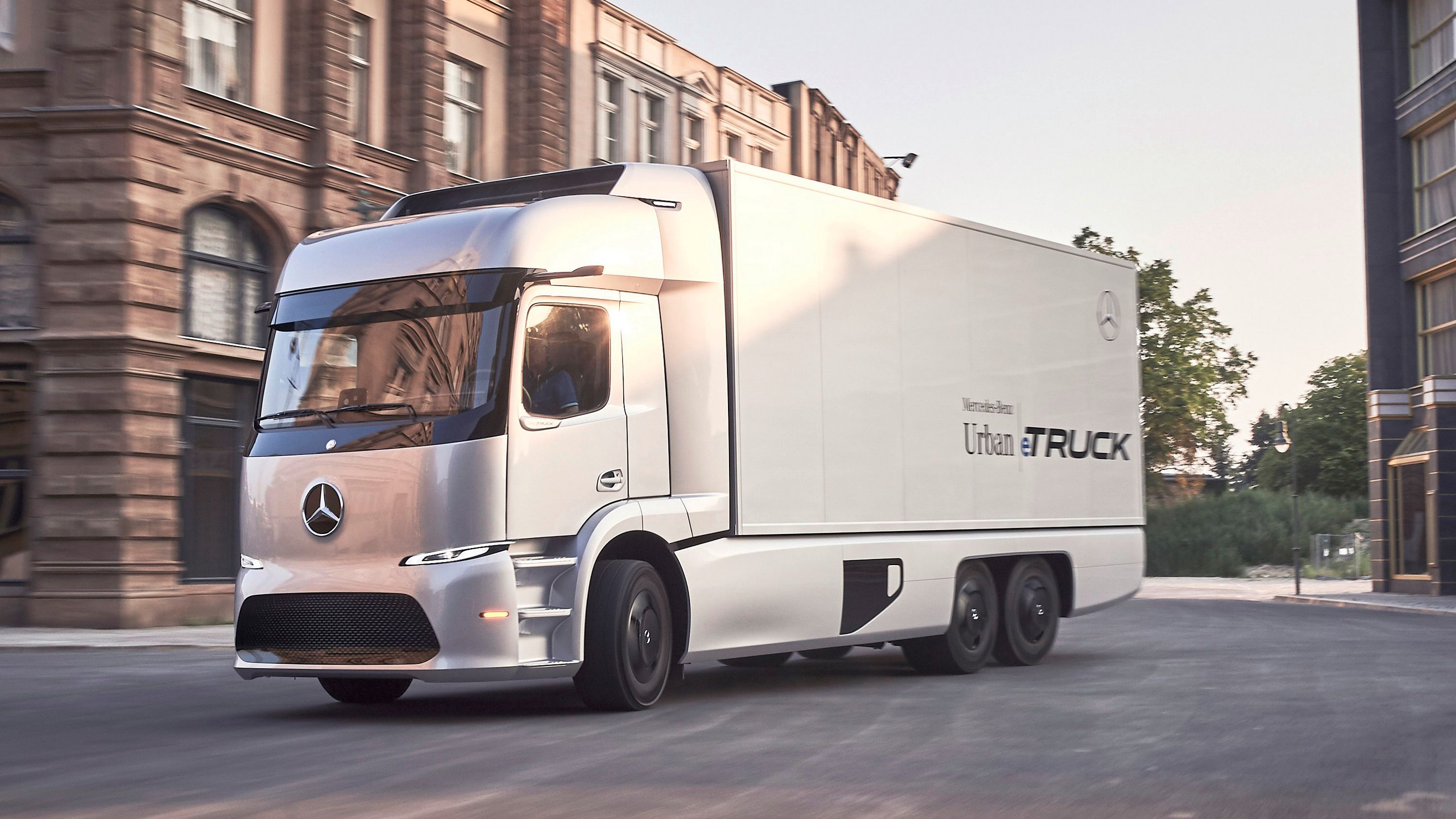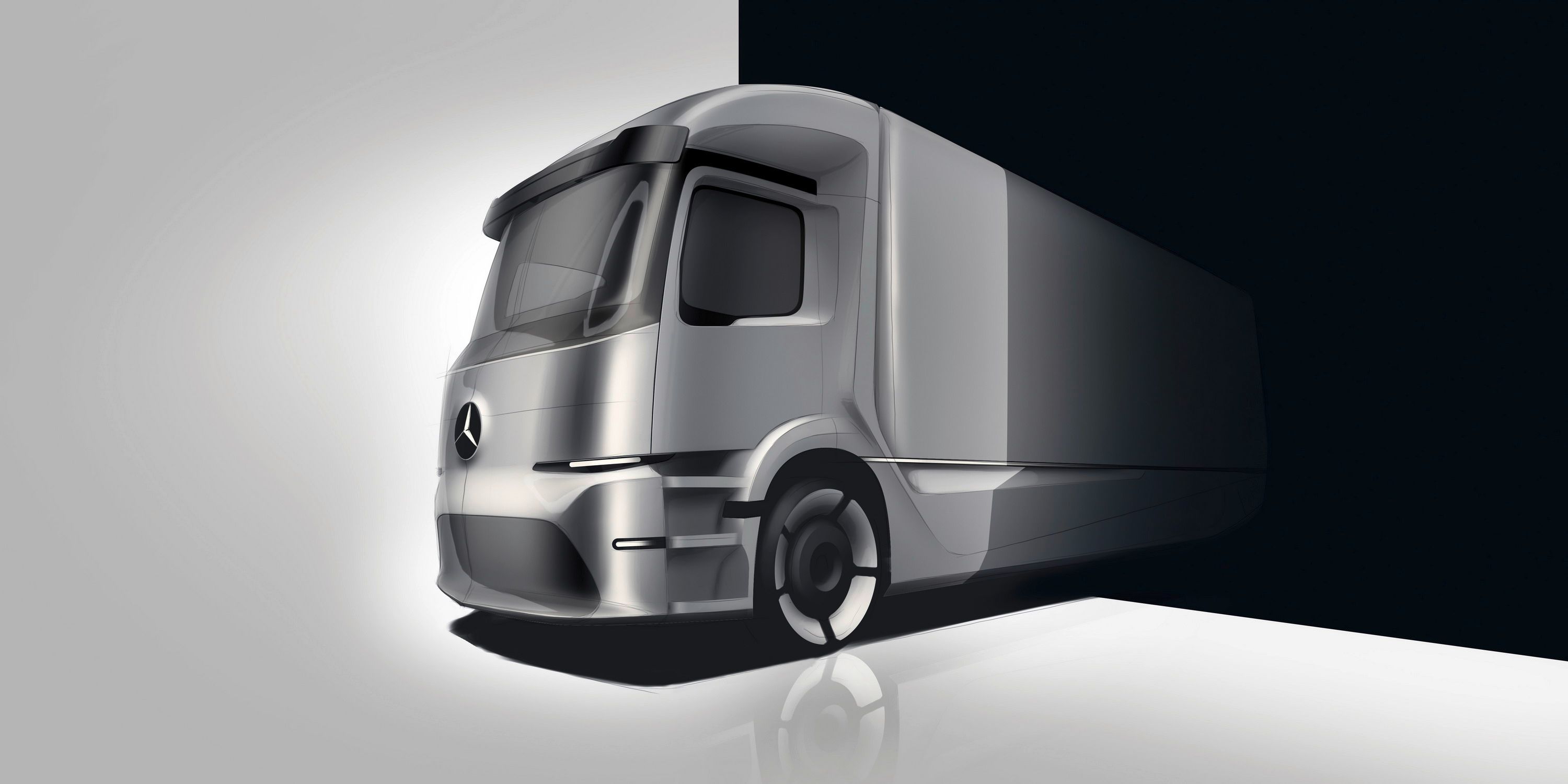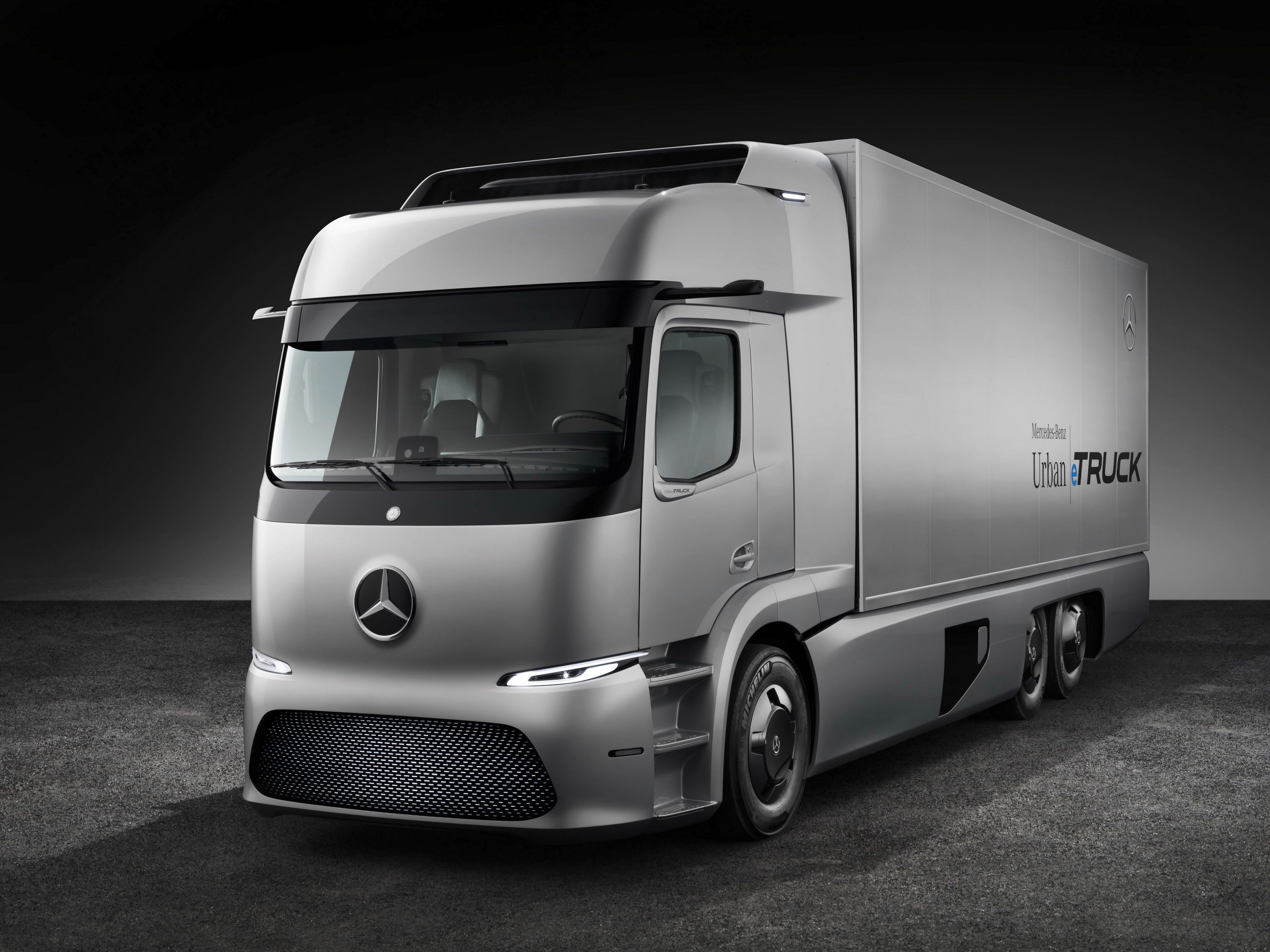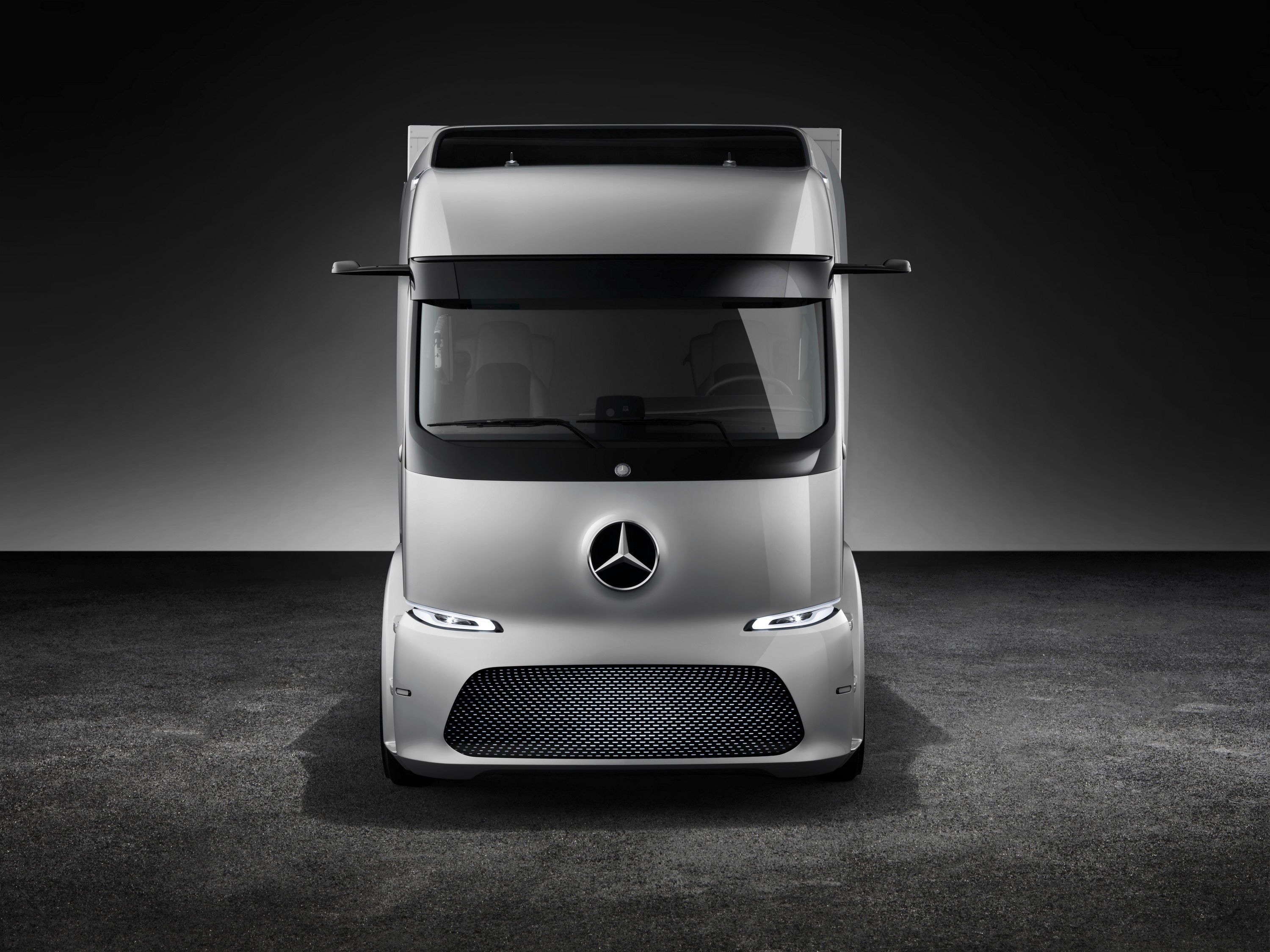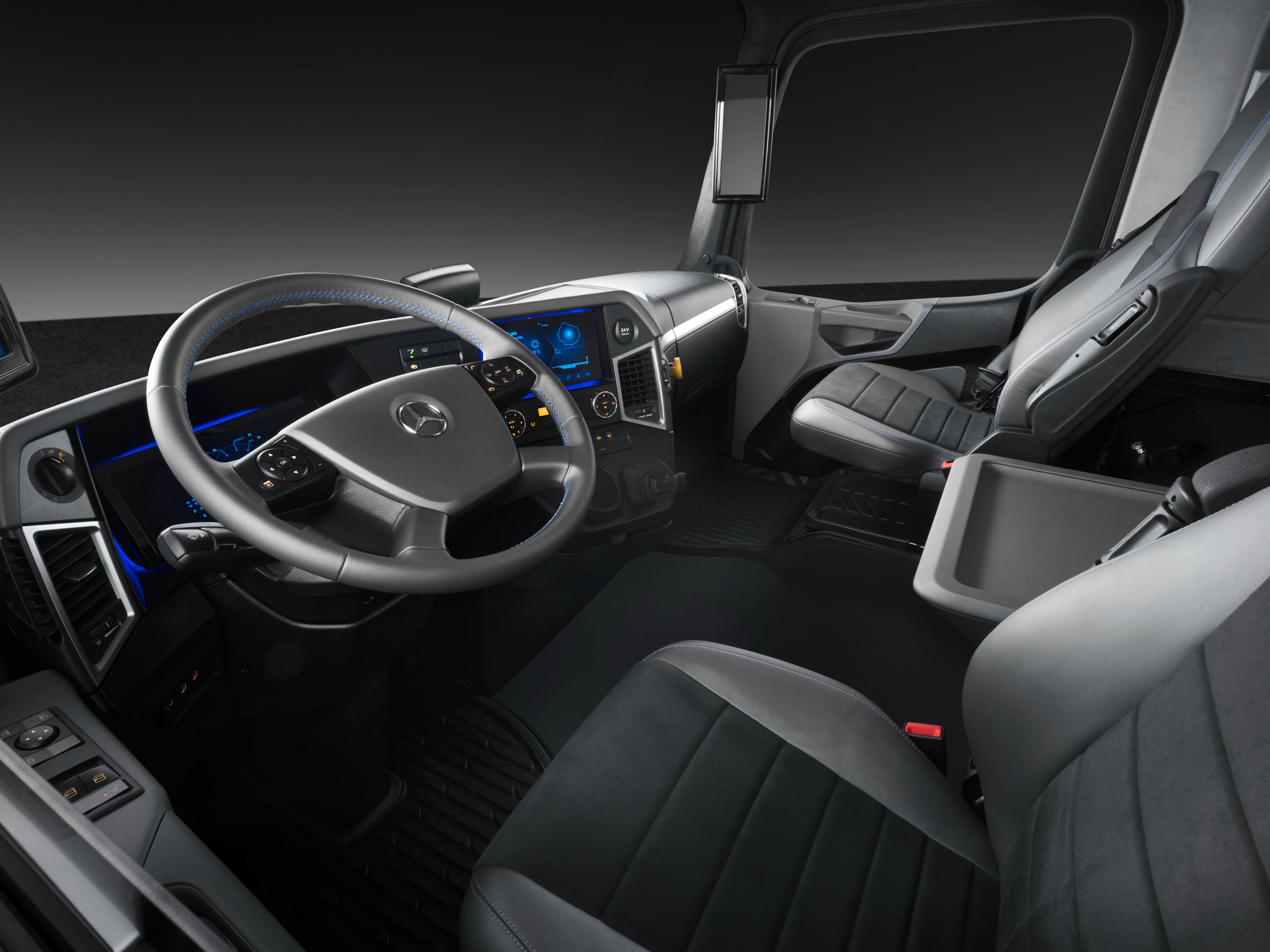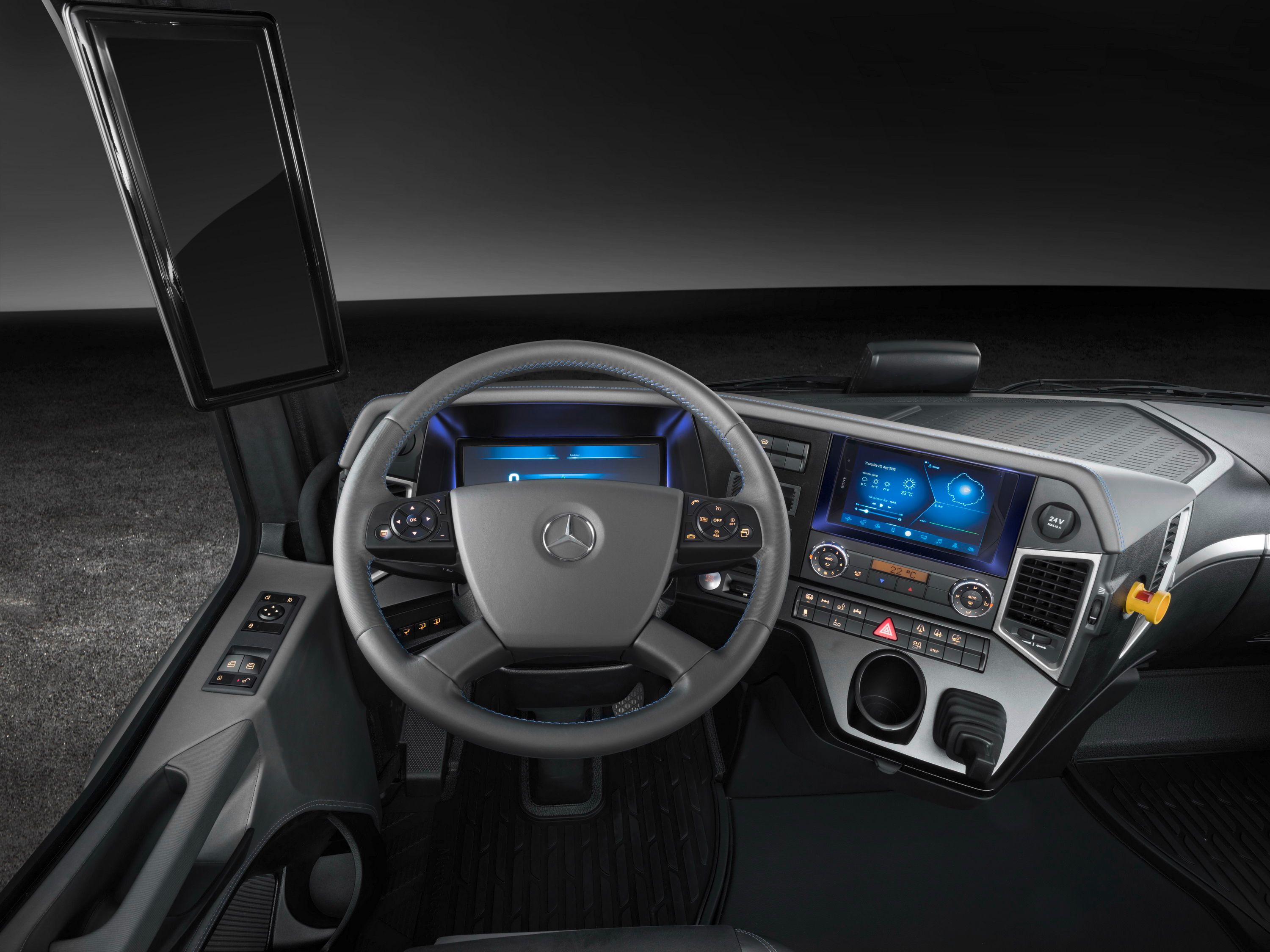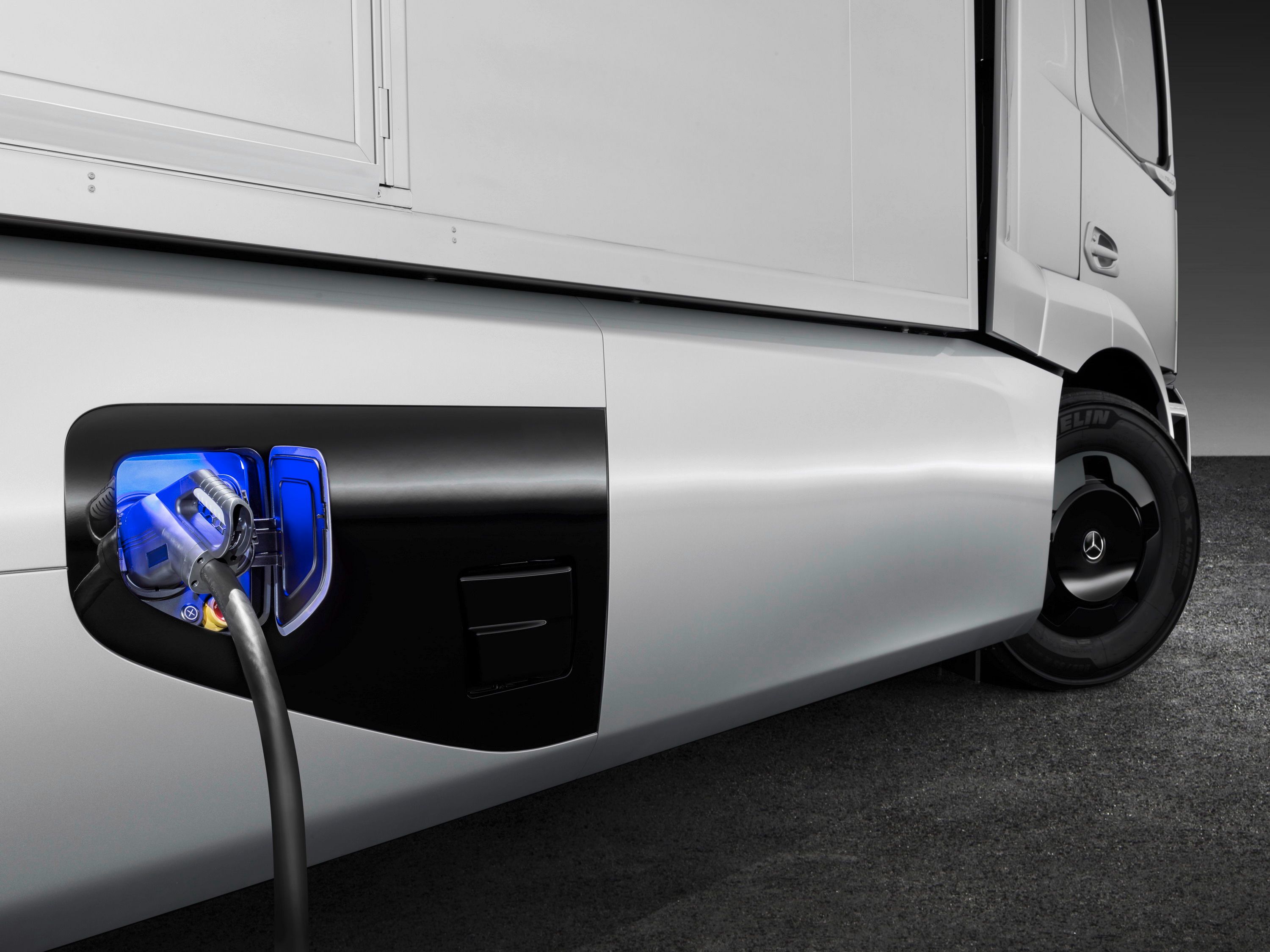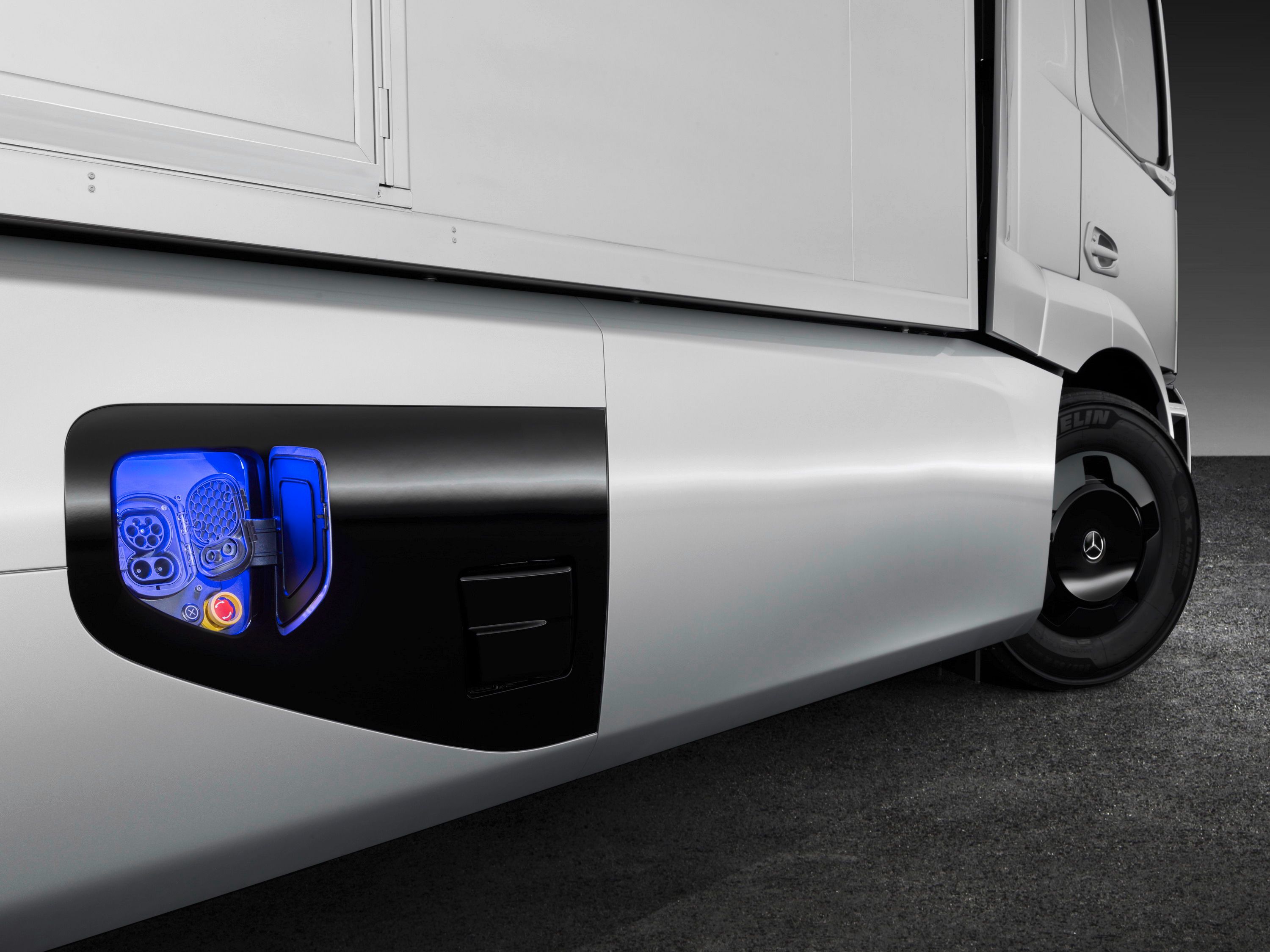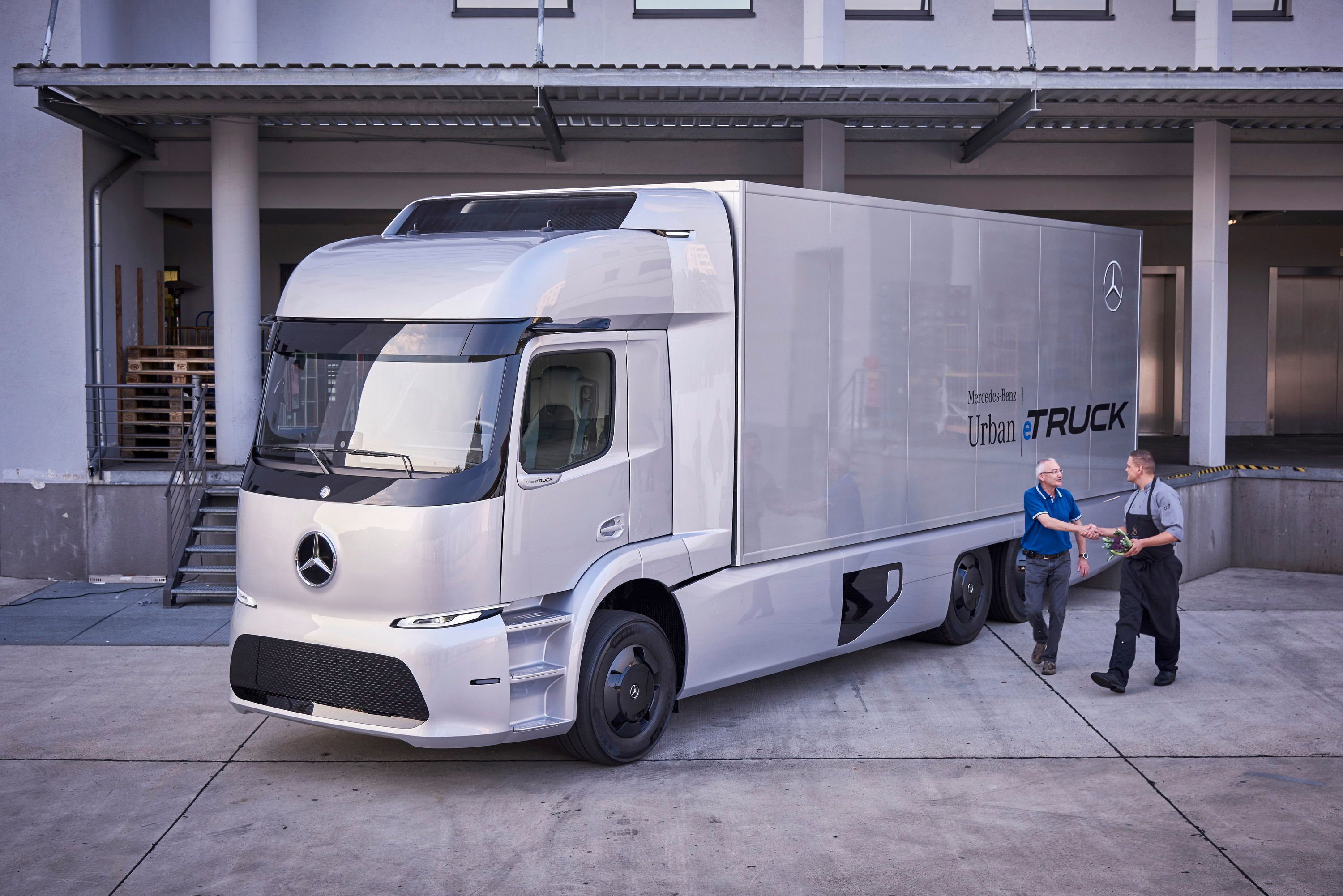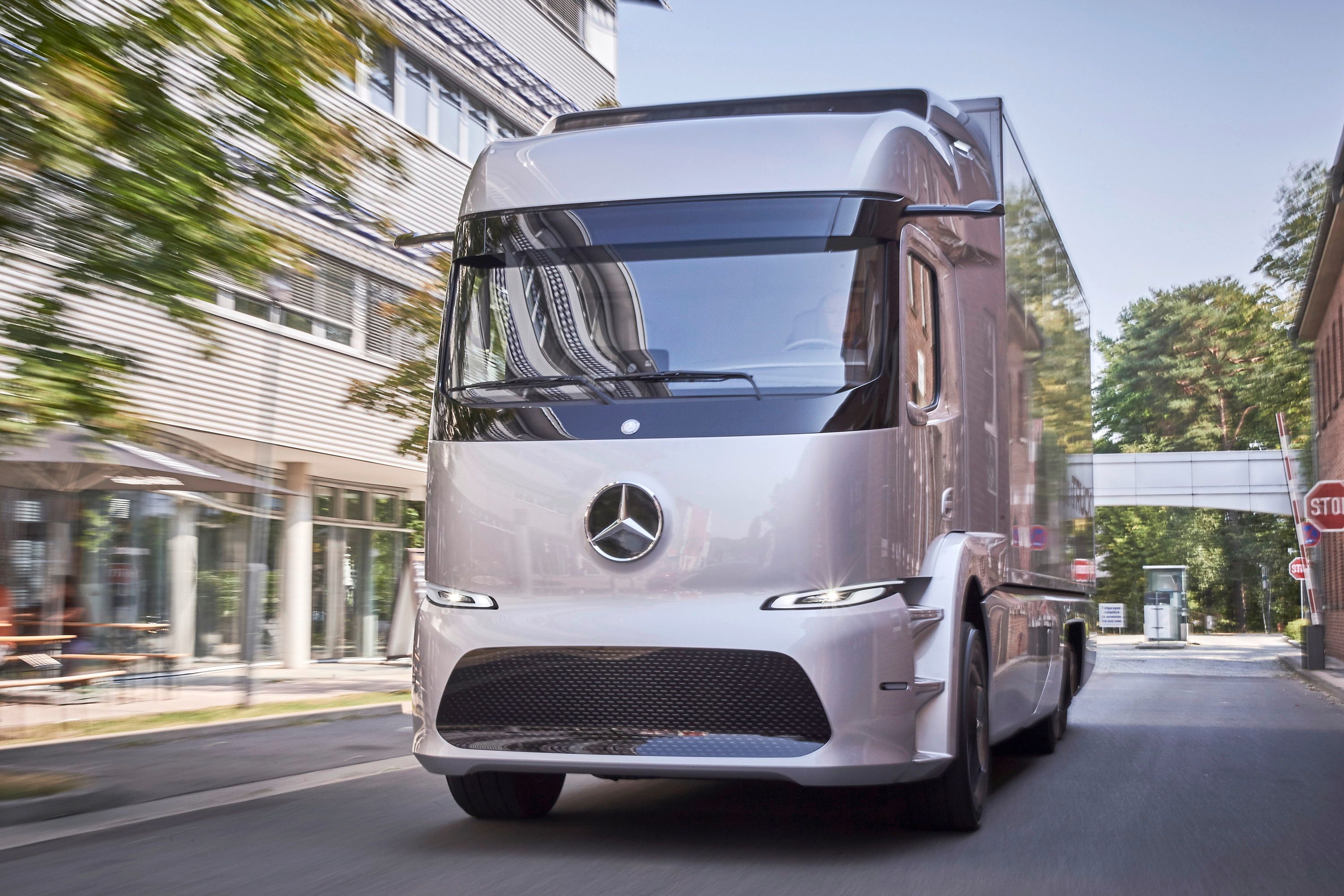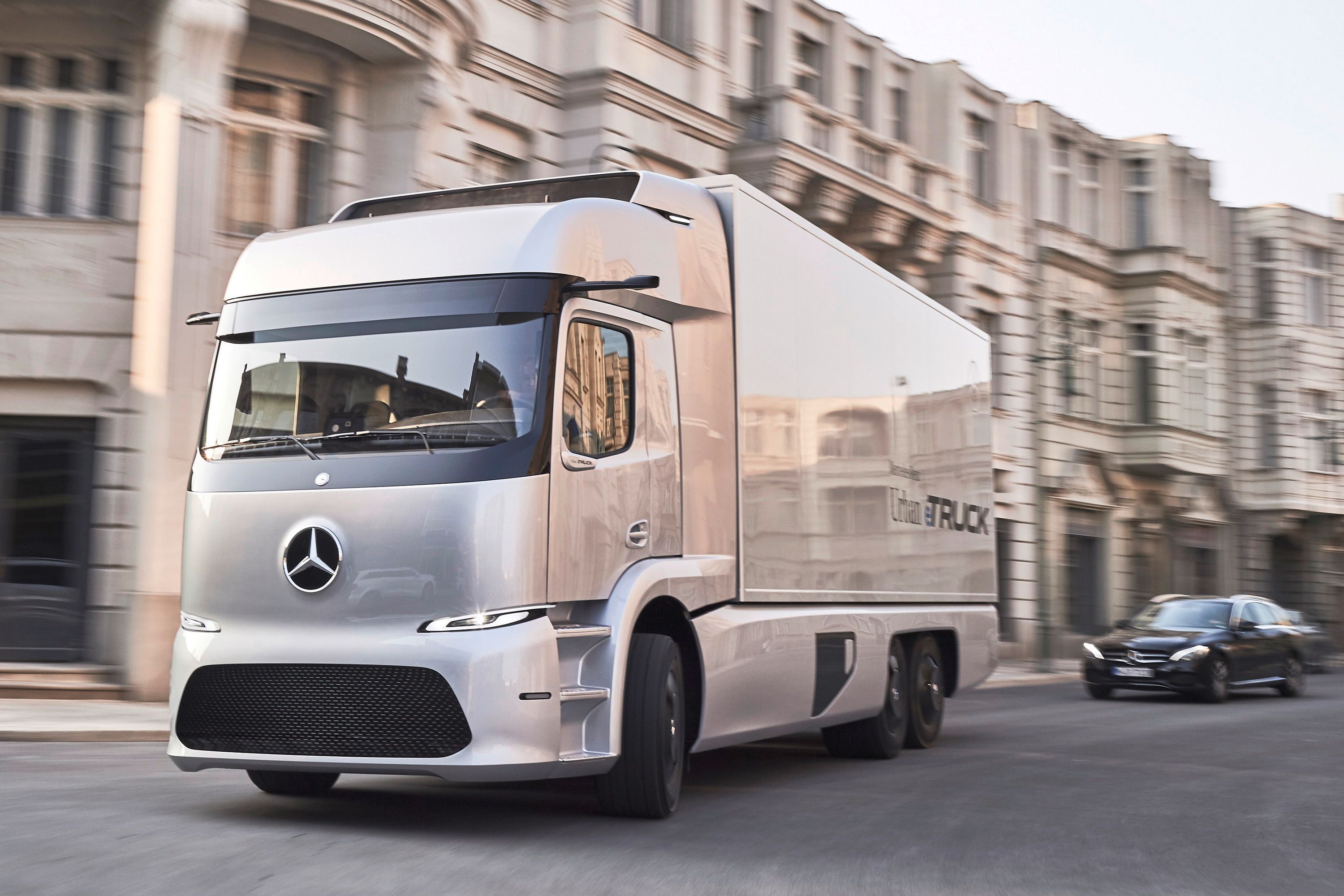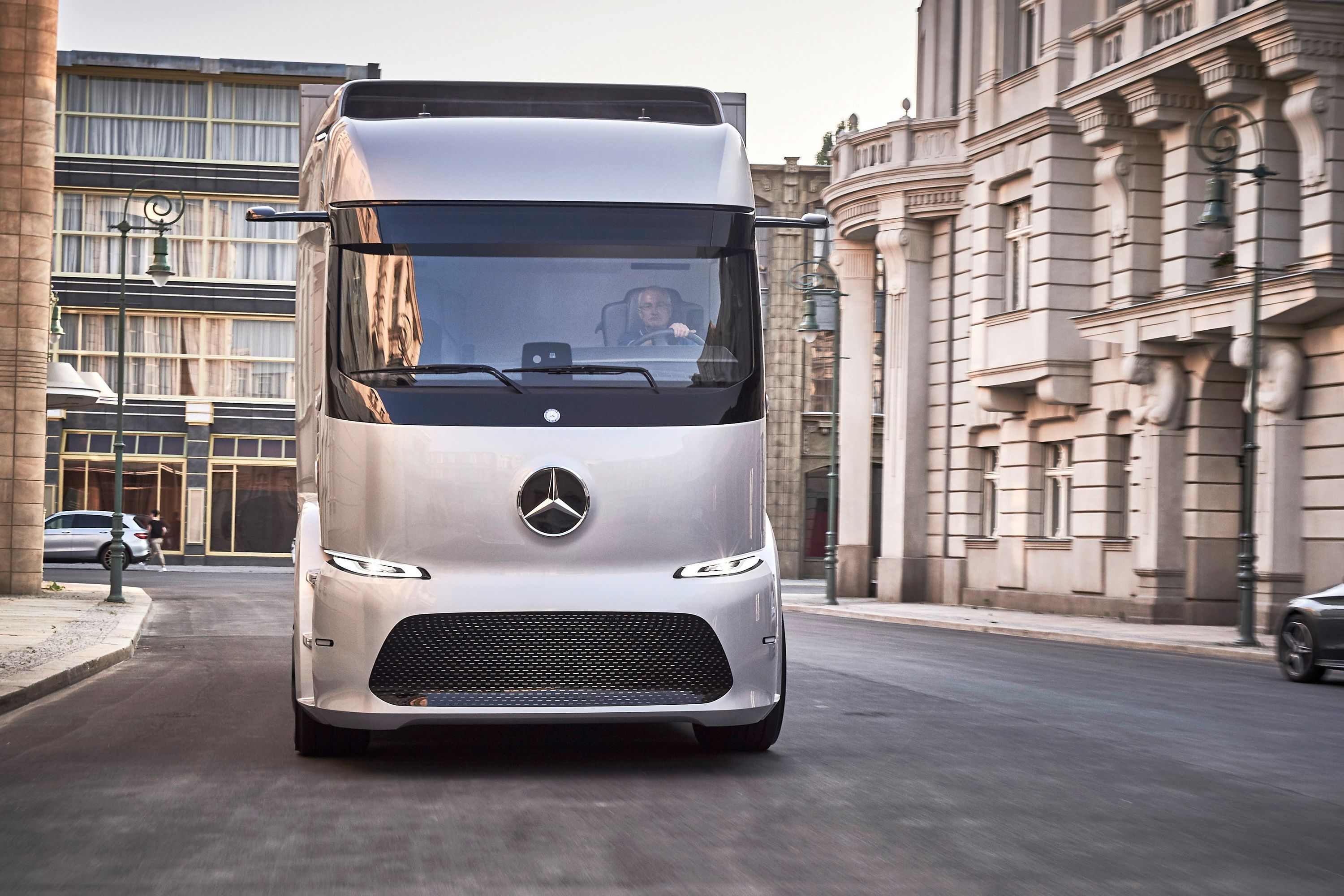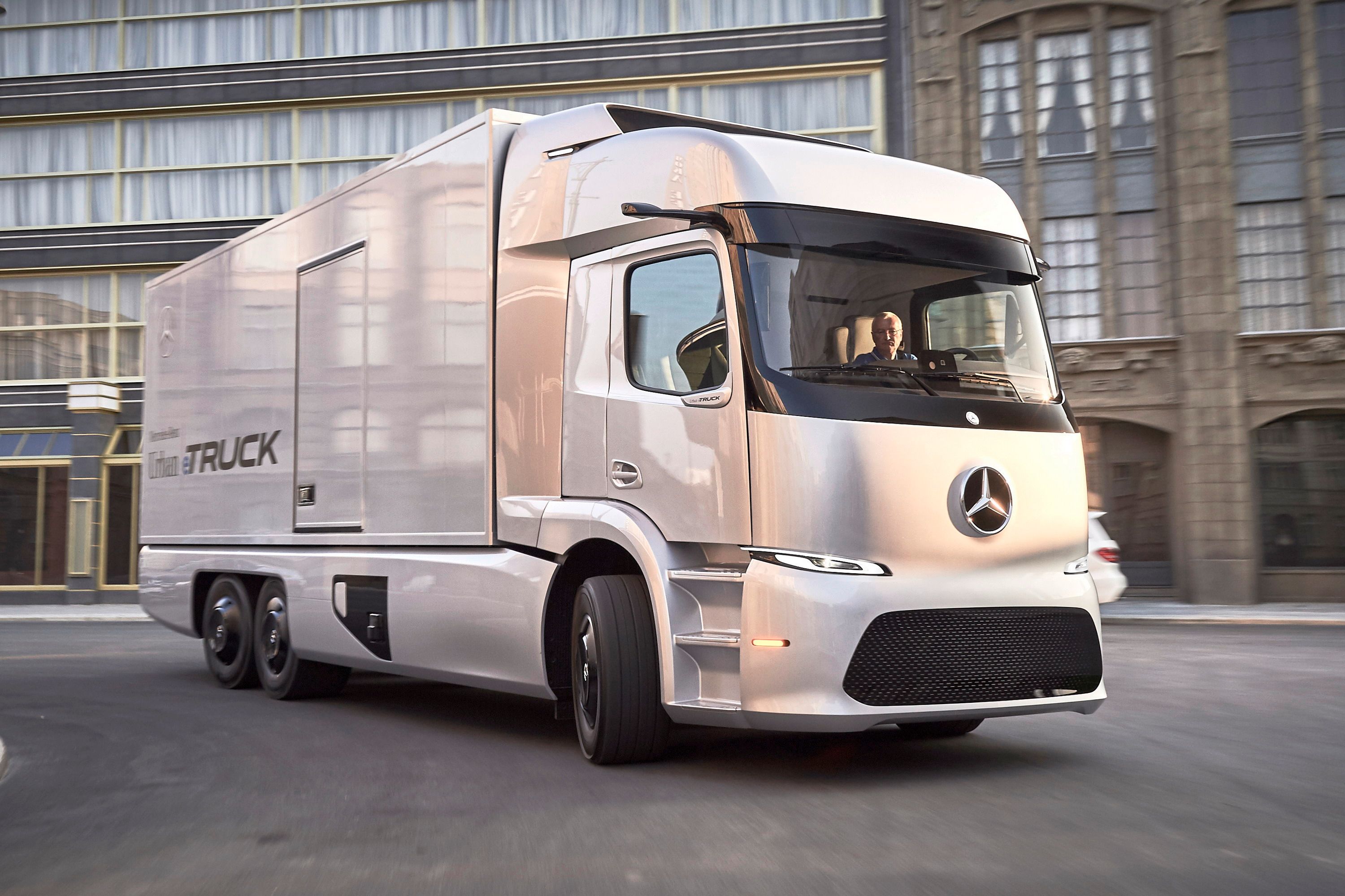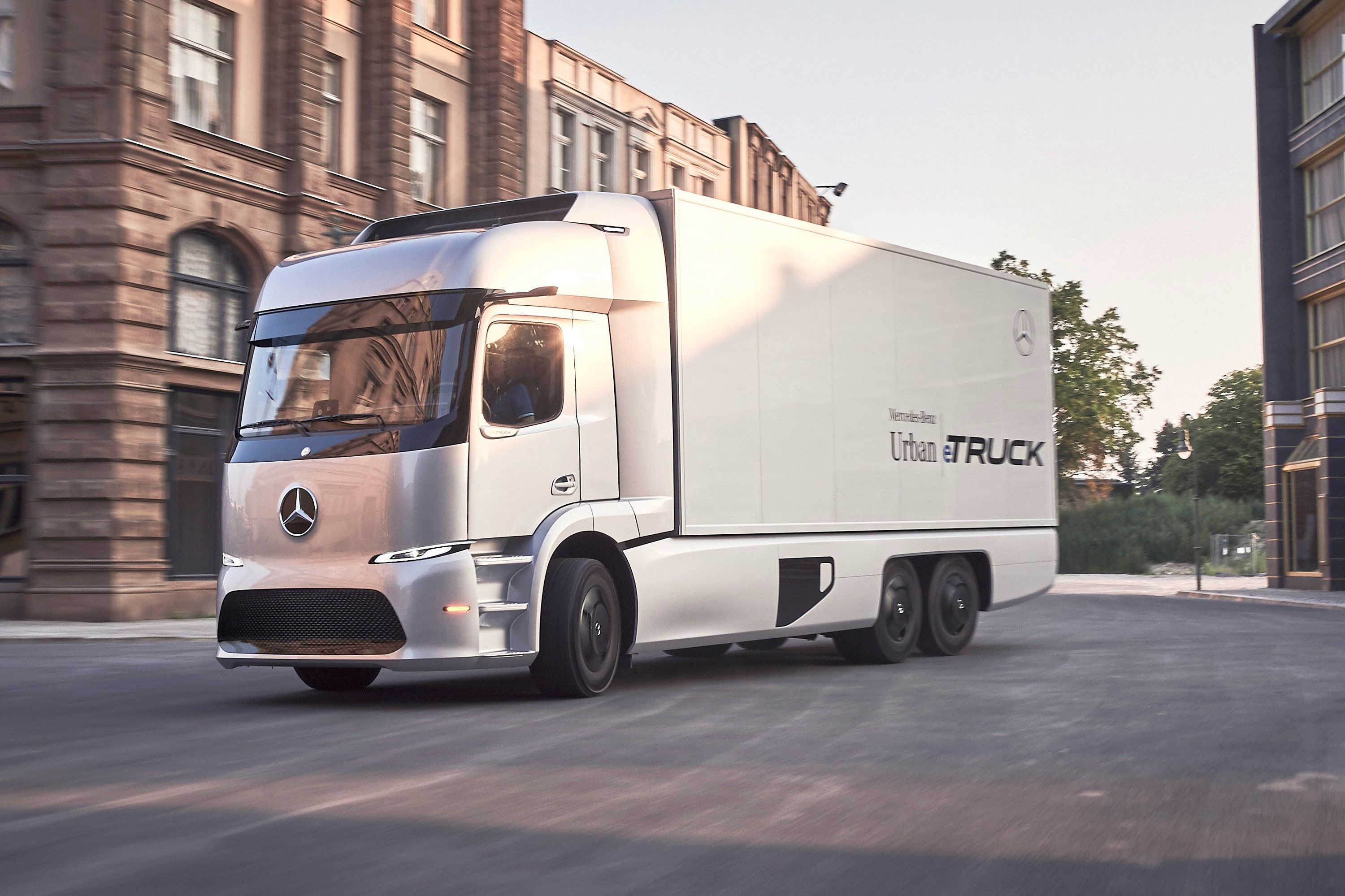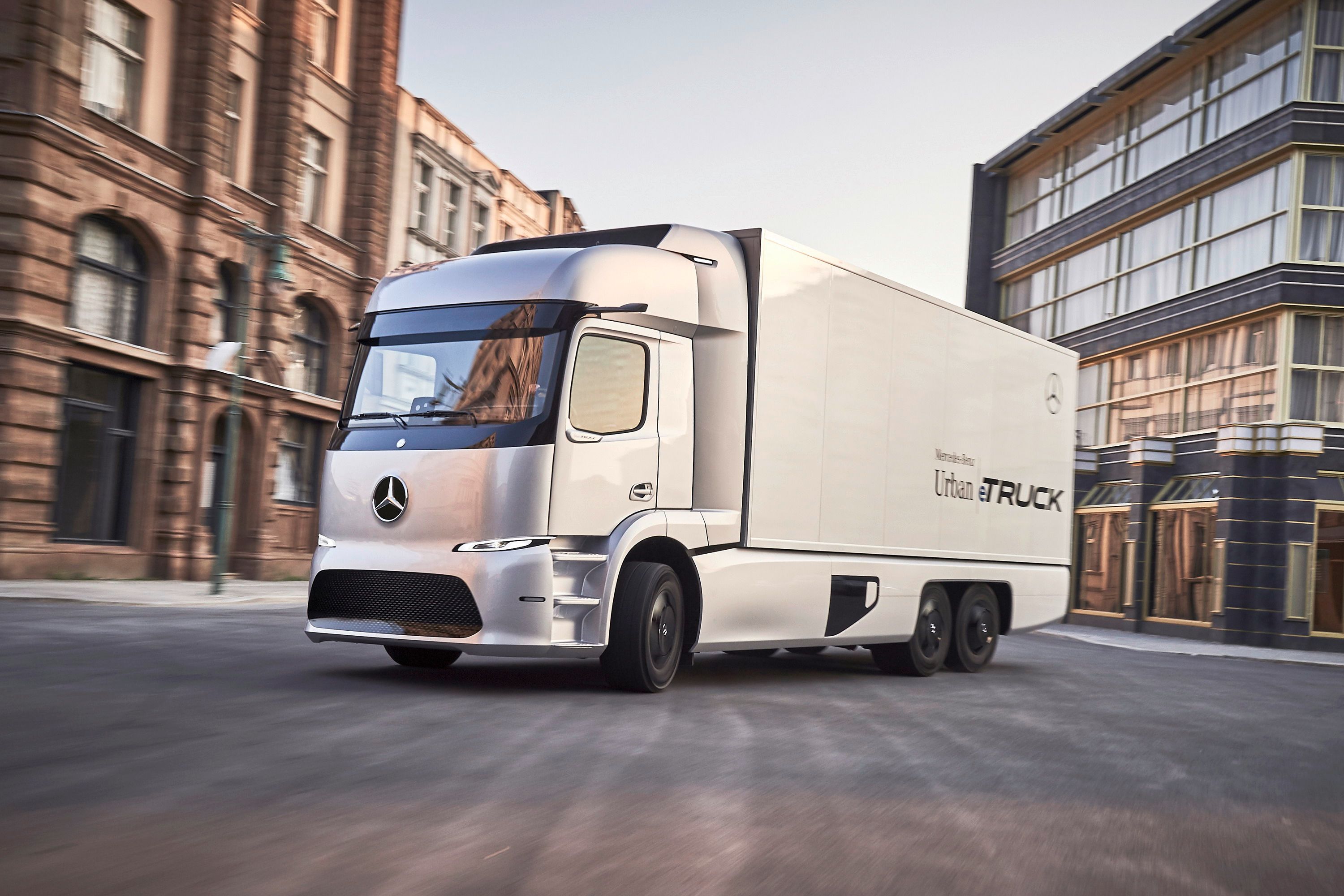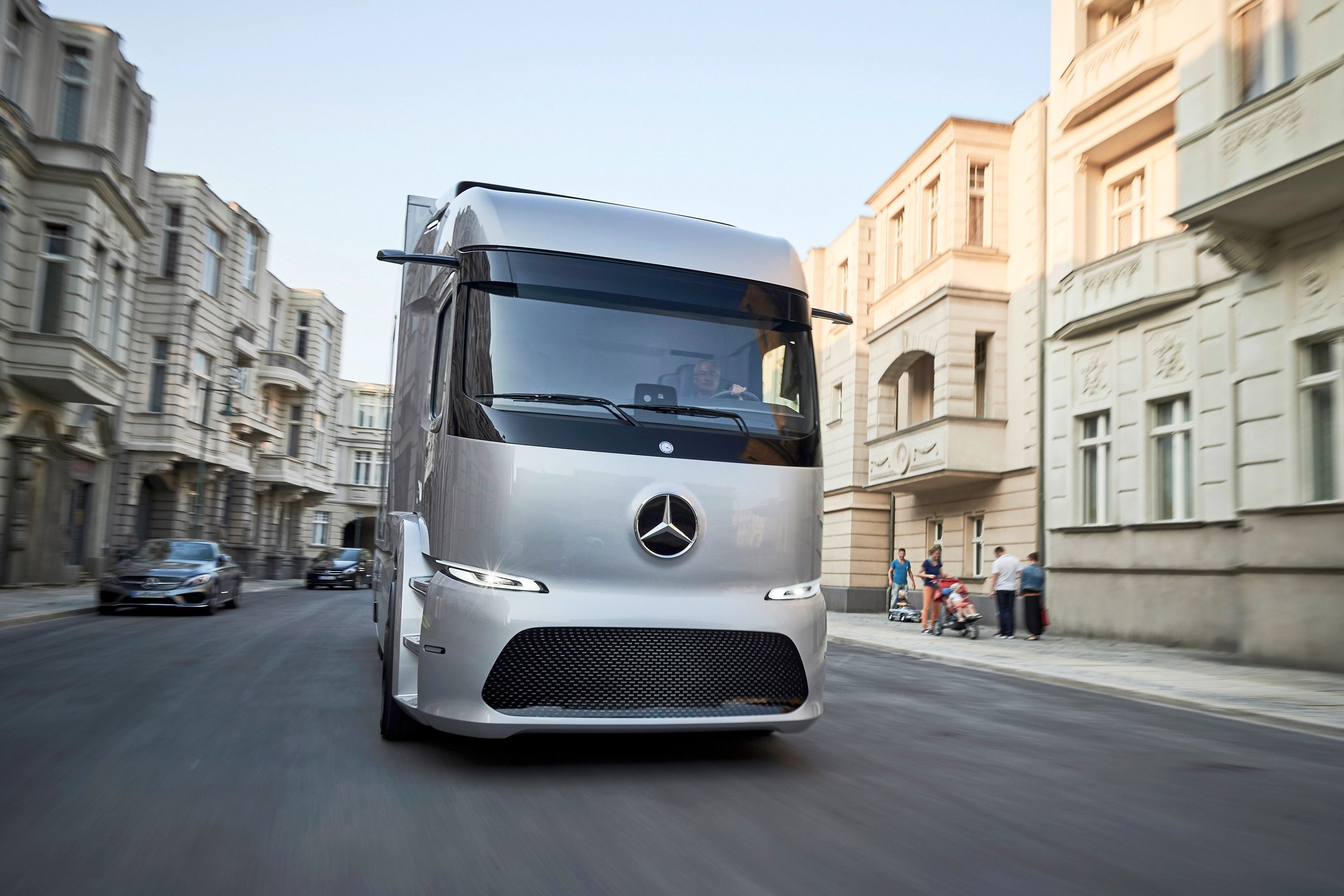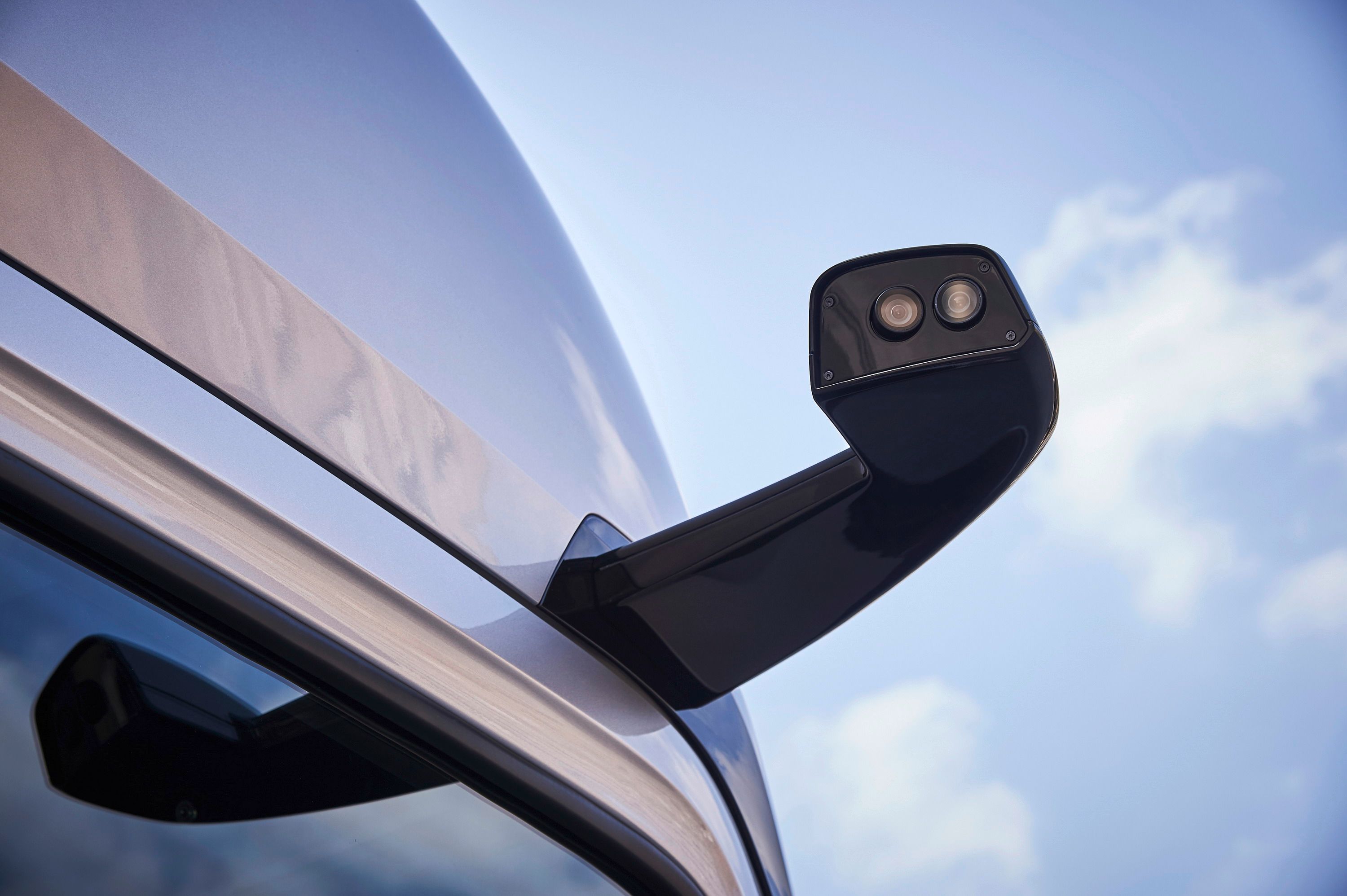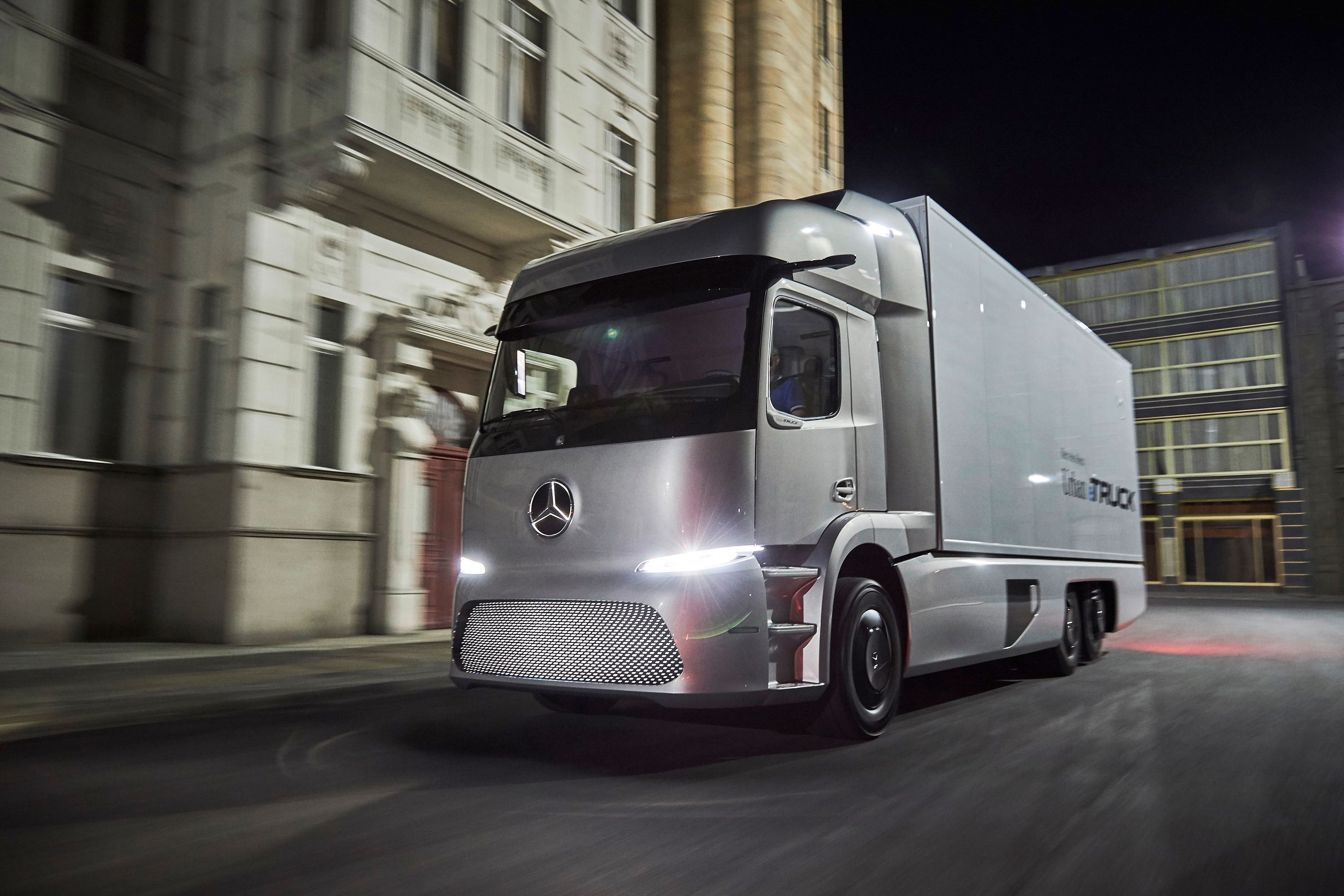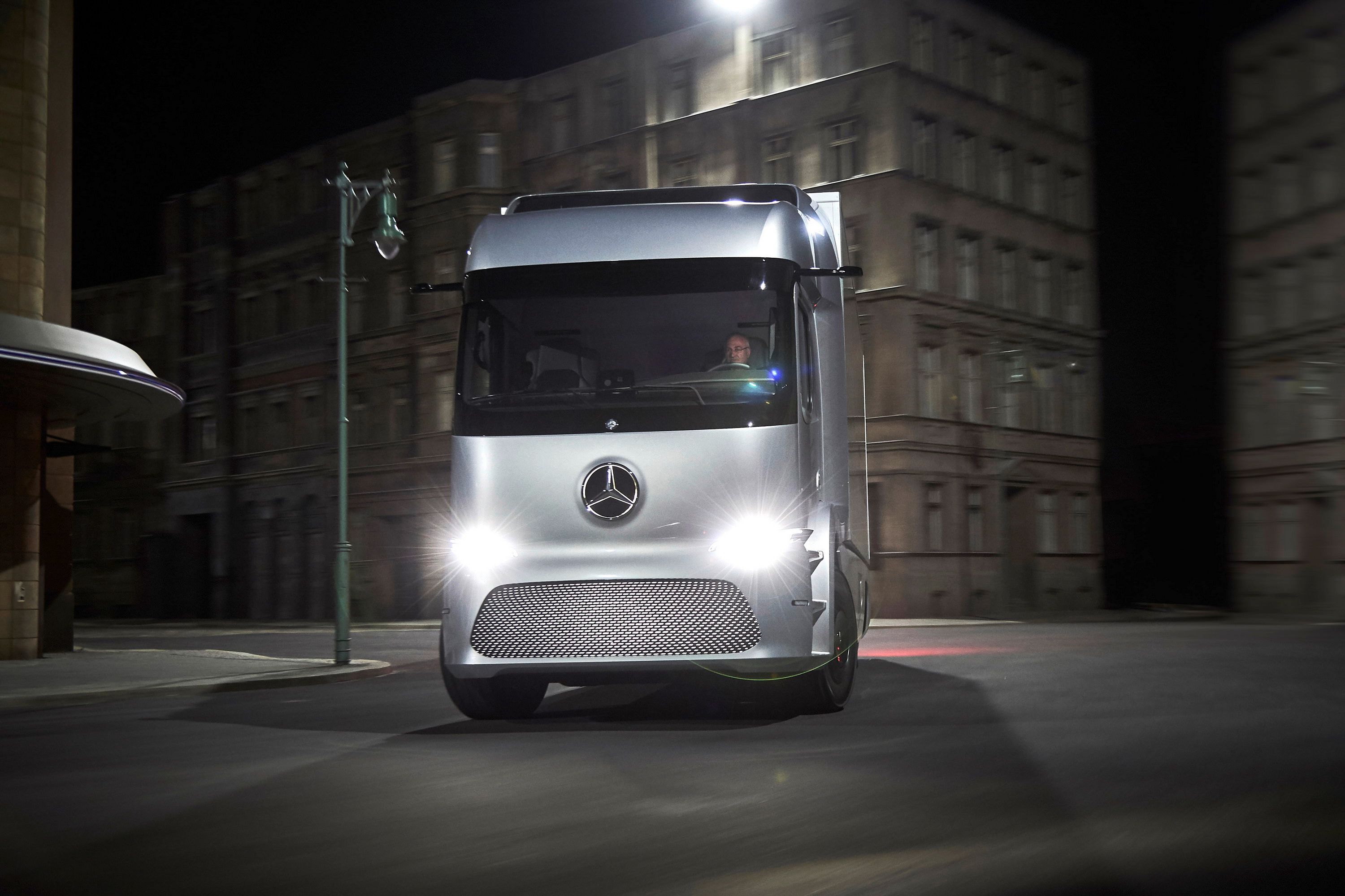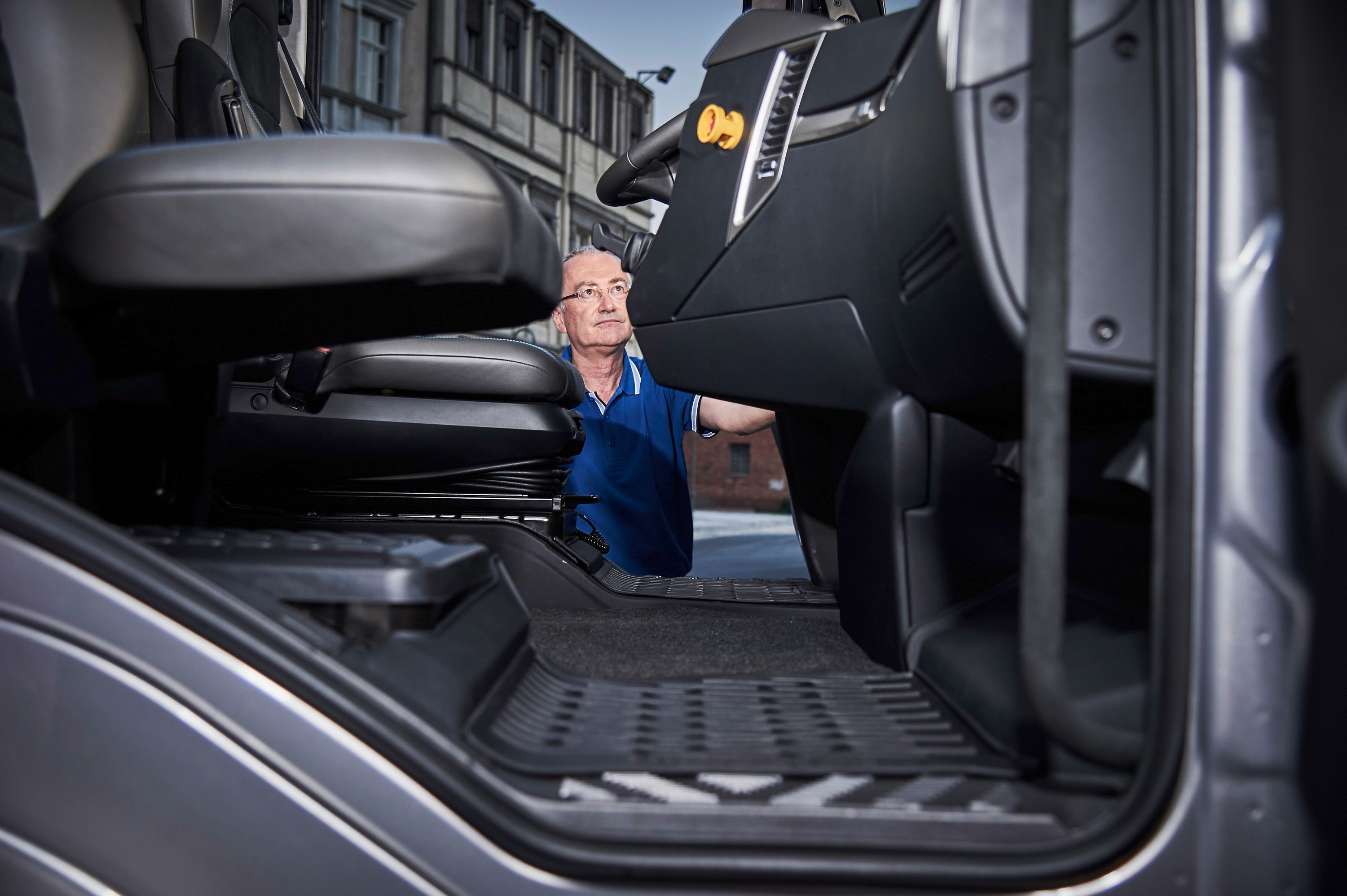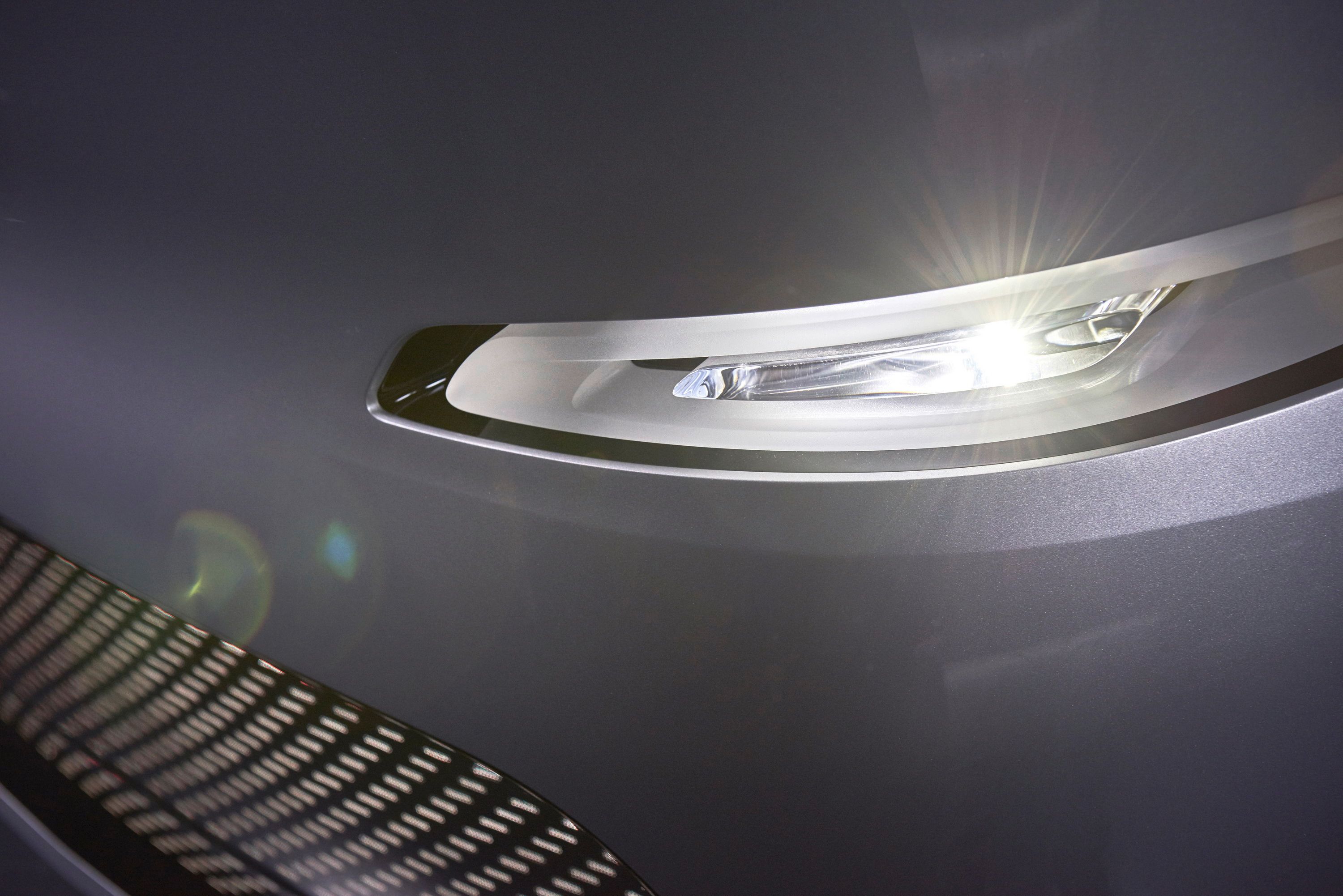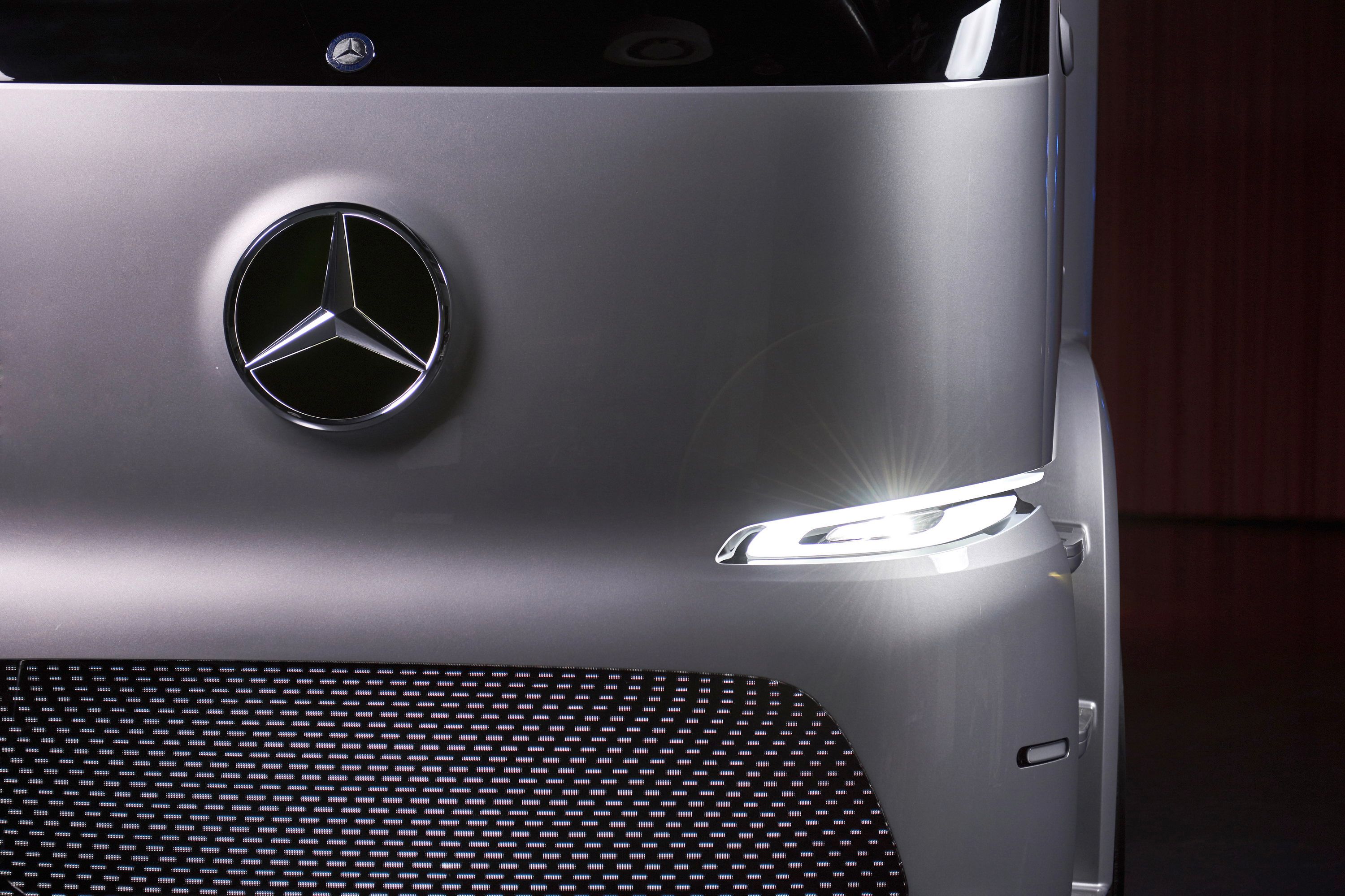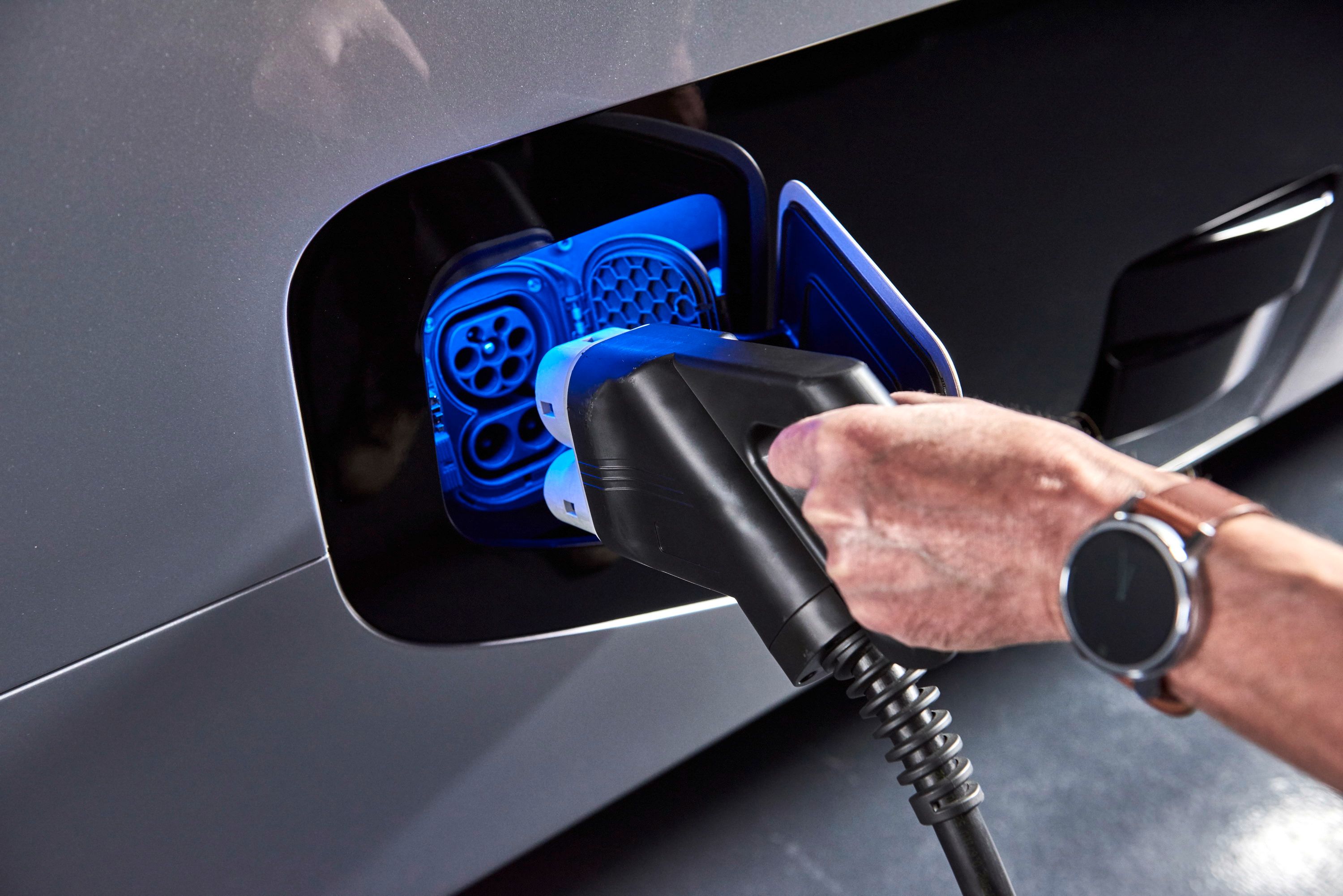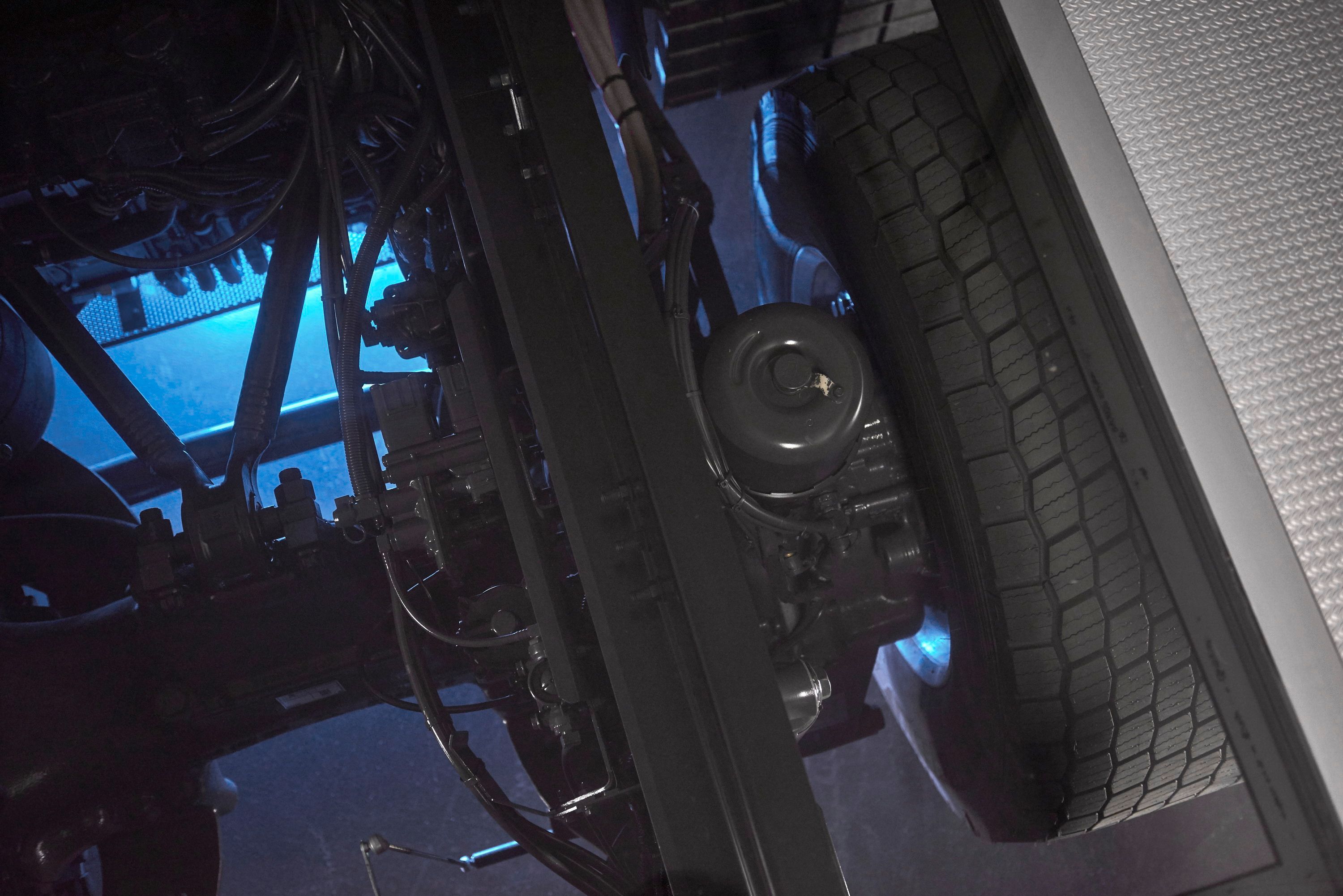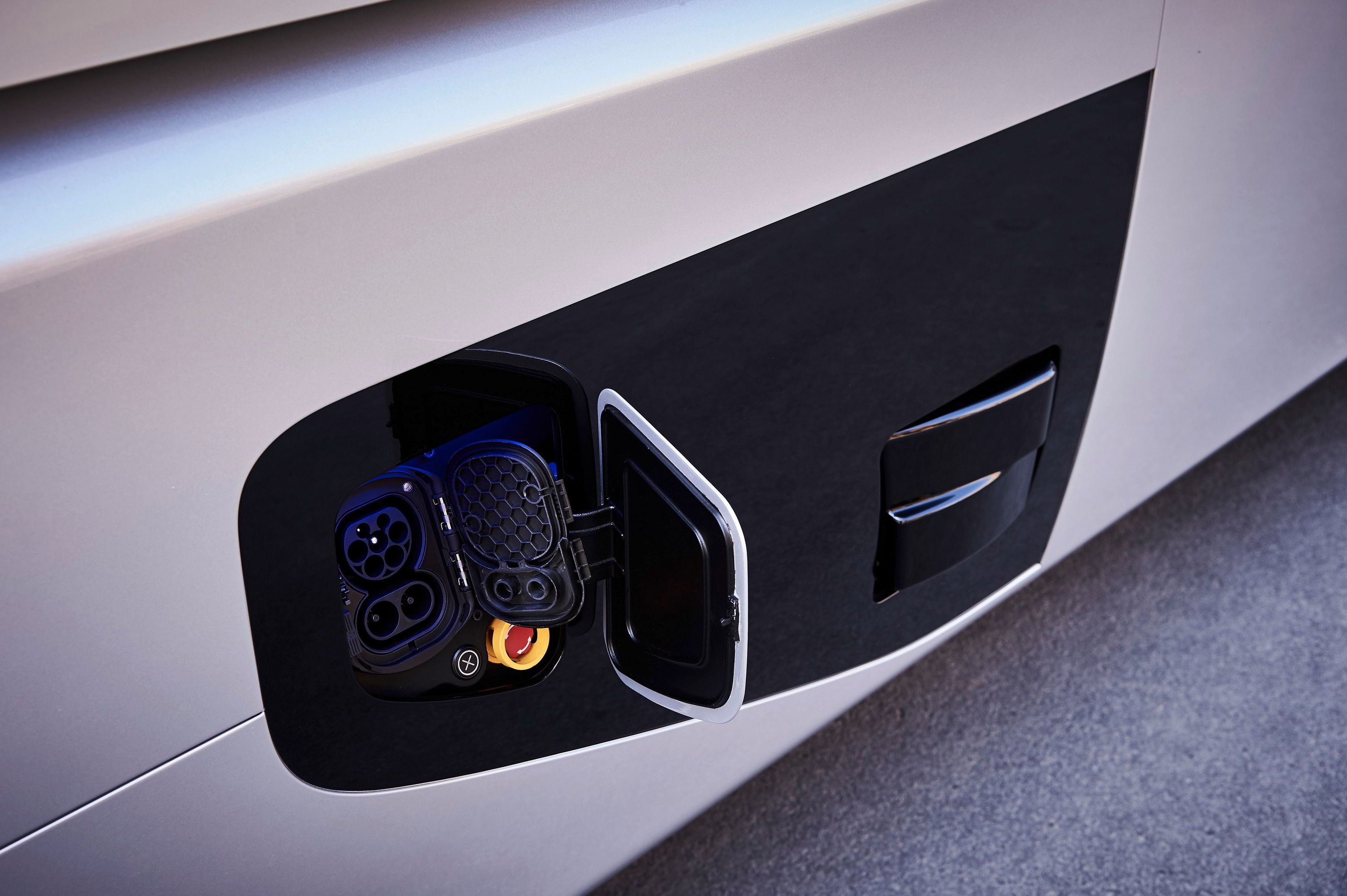Mercedes-Benz has announced an all-electric commercial truck designed to replace diesel-powered trucks on local, short-run delivery routes. It’s called the Urban eTruck and it runs off lithium-ion batteries that power two electric motors at the rear wheels for a clean, quiet, ride with zero local emissions.
The truck is said to have little trade-offs in relation to its diesel and gasoline-powered counterparts. It has a range of up to 124 miles and a maximum payload capacity rivaling diesel trucks. Its cabin comes chocked full of Mercedes’ latest technology from FleetBoard, including real-time traffic information with alternative route planning, driver and dispatcher communications, and emergency route guidance back to home base should the truck run low on its charge.
The Urban eTruck comes with three choices in battery size. The standard setup includes three battery modules with a total capacity of 212 kWh with a range up to 200 kilometers, or 124 miles. Battery modules can be factory ordered for truck with longer delivery routes and those that frequently travel at higher steeds, or trucks with larger payloads but travel fewer miles.
Mercedes says production of this type of truck is conceivable to begin at the start of the next decade. Whether the automaker will achieve that goal is unknown, but knowing how Mercedes generally succeeds at its goals, it’s likely vehicles like the Urban eTruck will become a reality.
This product concept comes on the heels of Tesla’s “Master Plan, Part Deux,” which details the electric automaker’s plans for building all-electric commercial trucks and public transportation. Undoubtedly Elon Musk has to feel the pressure.
Continue reading to learn more about the Mercedes-Benz Urban eTruck.
2016 Mercedes-Benz Urban eTruck
- Make: Array
- Model: 2016 Mercedes-Benz Urban eTruck
- [do not use] Vehicle Model: Array
Exterior
The Urban eTruck concept is certainly fancy looking. It incorporates Mercedes’ current concept design language seen on other concept vehicles. Sensual purity – that’s what Mercedes says the eTruck’s design philosophy embodies. Its swooping design features a minimalistic appearance with very few seams, making this cabover truck look more like a MacBook Pro than a semi. The satin grey color fuels that thinking a bit, too.
Up front, a gapping lower grille is filled with LEDs that light up the truck with a futuristic glow. Mercedes says the grille can be used to indicate battery charge, warning status, or other driver/operator information. It can also display attractive shapes like Mercedes’ starburst grille on its passenger cars during normal operation. Above, small LED headlights are both attractive and bright. A curvaceous fascia surrounds the front of the truck and includes a massive Mercedes emblem. Traditional side mirrors are replaced with cameras mounted on horizontal poles protruding from above the doors. This feeds two vehicle screens inside the cab that mimic mirrors. The reduced aerodynamic drag is also a design plus.
More objectively, the Urban eTruck concept showcases what a refrigerator truck would look like. The heavily insulated cargo box is kept cold by an overhead chiller. Other cab and box configurations would be offered as well. The charge port is located on the side of the truck, down low and just ahead of the rear wheels. Not only does this recall the fuel-filler location on conventional trucks, it also provides a short route to the battery packs, located between the fame rails.
Interior
Inside the Urban eTruck, Mercedes has combined utility with functionality and technology. At first glance, the cabin looks like a conventional semi-truck environment. The large steering wheel mounted at a shallow angle and driver-centric dash all seems very familiar.
Noticeably different is the level of technology. The dashboard is comprised of two main screens – one for gauges and the other for navigation, entertainment, and other ancillary functions. Obviously the gauge cluster screen keeps the driver informed of battery and motor statuses, along with speed and other important information.
This 12.3-inch screen, likely borrowed from the E-Class, also displays detailed information regarding the route, including traffic, obstructions, speed limits, and the amount of charge it will take to traverse it. The speed is shown on the left-hand side, with the center portion of the screen shows a visual representation of the road ahead. Shown on the road are any vehicles ahead, their distance from the truck, and their speed. Road sign recognition and 3D maps are also integrated into the system.
The mapping system also works closely with the drivetrain’s automatic drive control, warning the system of braking and acceleration phases and road features like traffic lights. The truck will also automatically adjusts its speed to match the posted speed limits. As you can gather, the Urban eTruck is nearly autonomous.
Drivetrain
Motivating this truck is a bank of lithium-ion batteries that power two electric motors. The batteries are mounted between the frame rails, while the motors are mounted at the hubs of the two drive wheels, making the eTruck a 6X2 configuration.
Mercedes plans to offer at least three battery configurations with the modular battery pack. In its standard form, the Urban eTruck comes with three battery packs that offers up a 124-mile range for this 26-ton GVW truck. Mercedes says that range should be more than enough for typical local deliveries in heavily populated urban areas – hints the “urban” in the truck’s name. This configuration produces 335 horsepower and 738 pound-feet of torque.
Fleet managers can also select a different number of battery packs. A two-battery module offers less rage, but greater payload capability thanks to the decreased weight. Likewise, a four-battery module offers a greater range and more power, but at the cost of less payload and more financial investment.
The truck’s drive system also offers three drive modes: Eco, Agile, and Auto. Eco mode makes the most of the battery supply, while reducing power levels and turning off ancillary equipment. Agile mode is designed for mountainous regions or for merging onto highways. It simply provides more power to the motors, but at the cost of range. Auto mode lets the computer pick the best setting for the current driving situation.
The Urban eTruck’s primary form of recharging is by plug-in, but its two motors do offer regenerative braking. This helps recharge the batteries while reducing the wear on the mechanical brakes. This helps cut maintenance and recharging costs.
Conclusion
This concept certainly seems promising thanks to the in-depth thought and big resources from Mercedes. Such a truck would perfectly answer the issue of zero-emission city centers, many of which have already been established in Europe. These electric trucks would be able to make local deliveries without falling outside the law or requiring special variances for operation.
While Tesla is still in the planning stages of its all-electric semi-truck and public transportation, Mercedes is already ahead of the game, having this concept built and on display at the 2016 IAA Commercial Vehicle show in Hannover, Germany. Only time will tell if Mercedes can indeed pull this project off, but with the technological advancements the automaker has already made, it seems almost a certainty.

